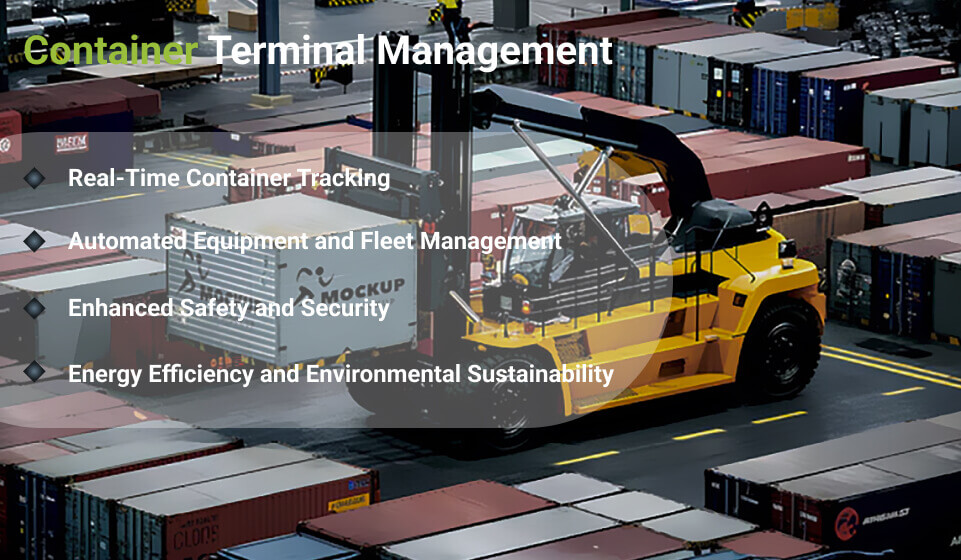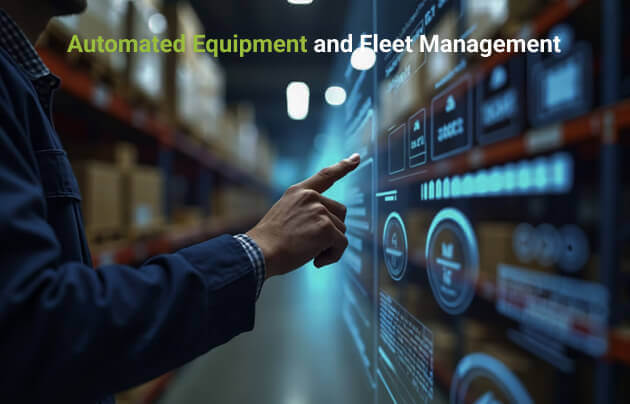


Real-Time Container Visibility
Smart Equipment & Asset Management
Safety & Workforce Monitoring
Security & Access Control
Automated Yard & Traffic Management
The container terminal industry is a critical component of the global supply chain, acting as a vital link between maritime and inland transportation systems. Terminals are responsible for the physical handling of cargo and play a strategic role in the timely movement and distribution of goods worldwide.
As the volume of global trade continues to surge, terminals are under increasing pressure to improve efficiency, reduce turnaround times, and enhance safety protocols.
Real-Time Container Tracking
IoT enables the use of GPS, RFID, and other tracking technologies to monitor the location and movement of containers within the terminal in real-time. This provides terminal operators with full visibility into the status of each container, allowing for more efficient planning and coordination of loading, unloading, and storage.
To meet these growing demands, Internet of Things (IoT) technology is becoming a cornerstone of modern terminal operations. By integrating IoT sensors, cloud connectivity, and smart analytics into daily workflows, container terminals can unlock a new level of operational intelligence.
These technologies offer real-time tracking of containers, predictive maintenance for critical equipment, and automated workflows that significantly boost throughput and resource utilization. Furthermore, IoT enhances the sustainability of terminal operations by optimizing energy consumption and reducing emissions.

Automated Equipment and Fleet Management
IoT technology enables the automation and remote control of equipment used in container terminals, such as cranes, trucks, and forklifts. By equipping these assets with sensors and IoT devices, terminal operators can monitor their performance, usage, and maintenance needs in real-time. This improves equipment uptime and reduces operational costs by enabling predictive maintenance.

Enhanced Safety and Security
Safety is a major concern in container terminals due to the complexity of operations, the presence of heavy machinery, and the movement of large volumes of cargo. IoT solutions can enhance safety by providing real-time monitoring of equipment, personnel, and environmental conditions. Additionally, IoT-enabled security systems can help prevent theft, unauthorized access, and damage to containers.

Energy Efficiency and Environmental Sustainability
The environmental impact of container terminals is a growing concern, with energy consumption and emissions contributing to climate change. IoT technology can help container terminals become more energy-efficient and environmentally sustainable by optimizing operations, monitoring energy usage, and reducing emissions.
Want To Talk To An Expert Before Getting Started?